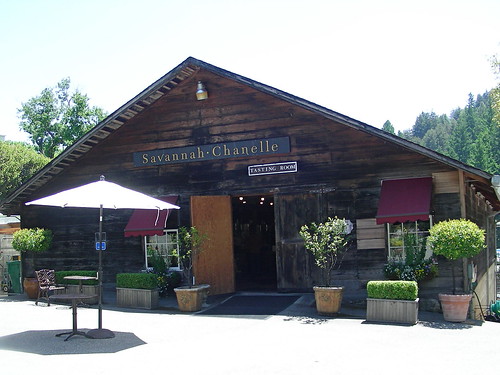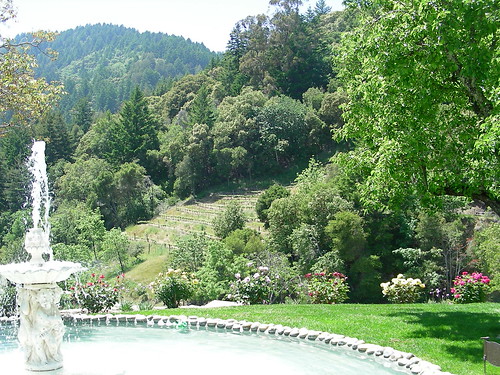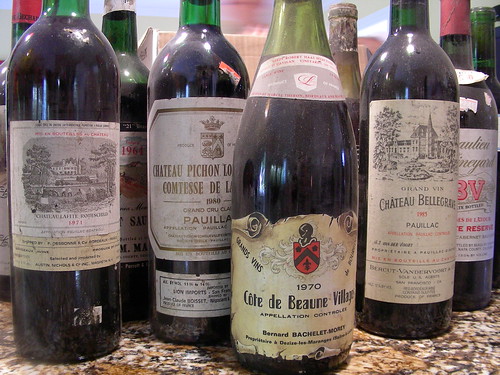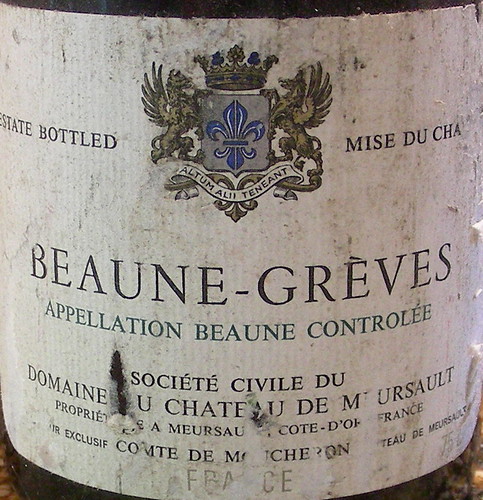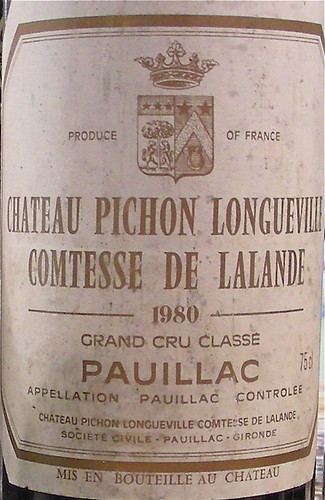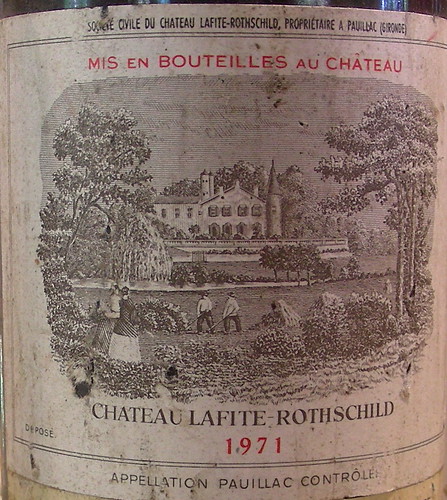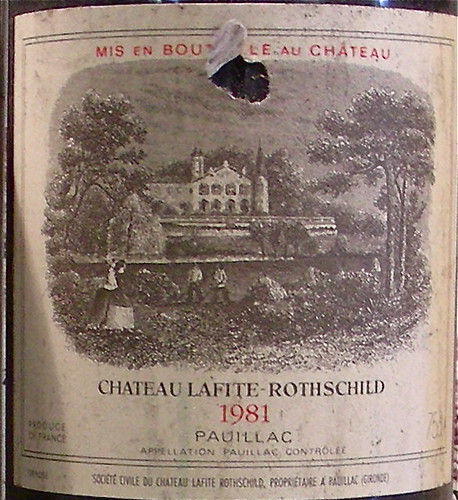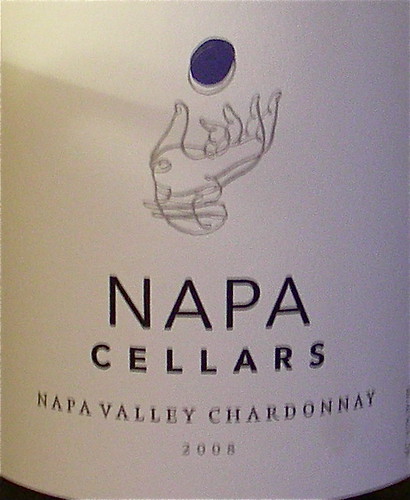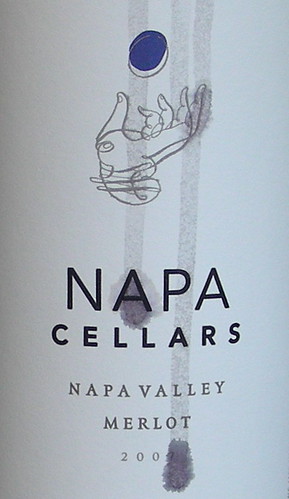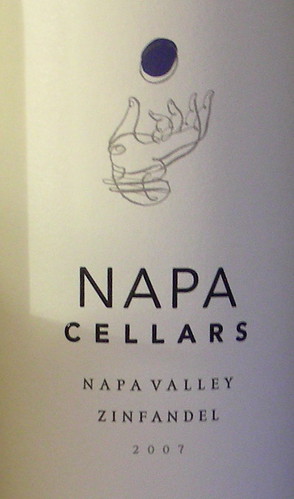Our last tasting event was another
Guess the Wine party where guests are asked to identify the varietal, region, and vintage of wines they drink blind. This time, the wines were served in identical skittle-shaped Côtes de Provence bottles —bottles that our friend Jean had saved just for the event— to ensure that no one could recognize the wine based on the shape and color of the bottle.
I have to say that this game is extremely challenging because even wines that are made with one single varietal are hard to identify, especially if the only clue you have is a list of 6 varietals to choose from. Nonetheless, it's a fun game and it gives you the opportunity to really enjoy a wine without being influenced by its label.
Here are the wines that we tasted:
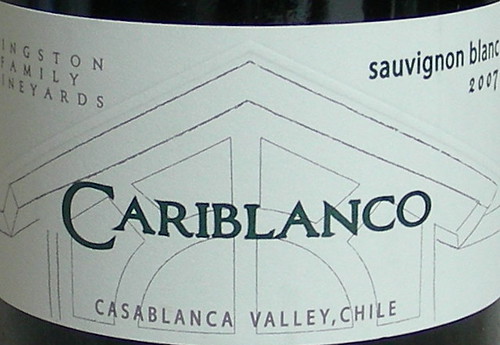
•
2007 Kingston Family Vineyards Cariblanco Sauvignon Blanc: The
Kingston Family came to Chile in the 1900's looking for copper and gold. In the 1920's, they settled in Casablanca, a town between Santiago and Valparaiso, and built a farm. They now specialize in Pinot Noir, Syrah, and Sauvignon Blanc from cool-climate vineyards located in the
Casablanca Valley, about 12 miles from the Pacific Ocean. My notes: pale color, nose of citrus, grapefruit, good body on the palate, fresh, crisp mouthfeel.
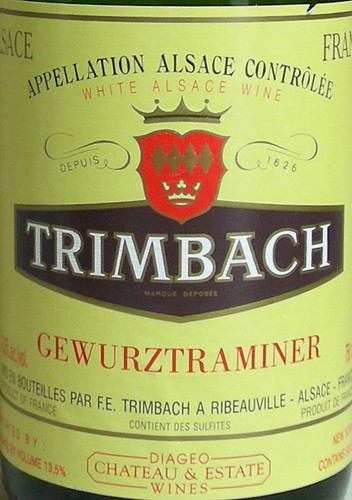
•
2006 Trimbach Gewürztraminer: The
Trimbach family has been making wines in Alsace since 1626. The estate vineyards are located around
Ribeauvillé, an area known for its soils of clay and limestone. The Trimbach house makes wines that are dry, mineral, fruity, and well balanced from classic Alsatian varietals such as Riesling, Gewürztraminer, Pinot Blanc, and Sylvaner. My notes: light golden color, nose of rose petal and lechee fruit, slightly sweet on the palate with a mineral finish.
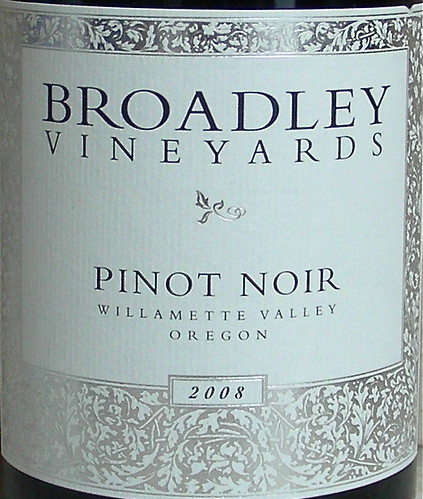
•
Broadley Pinot Noir Willamette Valley:
Broadley Vineyards have been making Oregon Pinot Noir for more than 20 years. The winery has 30 planted acres in the warmest and driest part of the valley near the small town of Monroe in Southern Willamette Valley. Grapes are harvested by hand and then a good portion of the wine is fermented in wood as whole clusters (stems and all) to add structure and character. The Willamette Valley Pinot Noir is a blend from several vineyards in the appellation. My notes: medium garnet color, aromatic nose of sweet cherry, light to medium bodied on the palate, good acidity, spicy finish. A very nice Pinot at a great price.
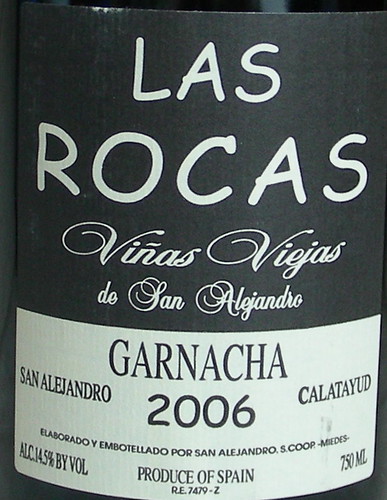
•
2006 Las Rocas de San Alejandro Garnacha Vinas Viejas: founded in 1962,
Las Rocas de San Alejandro is a cooperative in the
Calatayud appellation, in northeast Spain. Calatayud has a continental climate with vast temperature differences between night and day. The region is an old river basin with soils comprised of limestone and loam over slate and gypsum. The majority of the wines produced are red mostly from Grenache or Garnacha (55% of the vines planted) followed by Mazuelo, Tempranillo, Monastrell (or Mourvèdre), Cabernet Sauvignon, Merlot and Syrah. The Garnacha Vinas Viejas is from dry-farmed old vines Grenache vines (a minimum of 45 year old) and aged in American oak (60%) and French oak barrels (40%). My notes: dark garnet color, spicy, peppery nose with black cherry aromas, firm backbone on the palate with some tannins, lengthy finish.
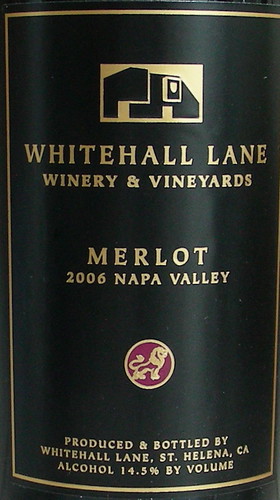
•
2006 Whitehall Lane Merlot Napa Valley: founded in 1979,
Whitehall Lane is a small, family owned winery located in Rutherford, Napa Valley. In 1993, the Leonardini family bought the Whitehall Lane property, updated the winemaking process and currently owns and operate six Napa Valley vineyards in the Rutherford, Oak Knoll, and St. Helena appellations. The 2006 Merlot is a blend of 83% Merlot, 10% Cabernet Sauvignon, and 7% Syrah. The Cabernet Sauvignon adds structure and additional fruit aromas while the Syrah adds complexity to the blend. My notes: deep red color, sweet berry aromas on the nose, soft tannins on the palate with notes of oak and vanilla, juicy finish.

•
2007 Thorn-Clarke Shotfire Shiraz:
Thorn-Clarke Wines is a family owned producer located in the
Barossa Valley in South Australia, probably Australia's most famous wine region. The valley enjoys a Mediterranean climate with a lot of sunshine, low humidity and rainfall, ideal for full-bodied red wines, especially Shiraz. The wine is aged for 12-18 months in a mix of French and American oak, 40% new. My notes: deep red color, smoky pepper on the nose, rich and soft on the palate with aromas of sweet berries, spicy and mineral on the finish, a great way to end the evening.
This year, Xavier was our winner and received a bottle of Champagne for his performance. Hélène got the lowest score but lucky her, she got a bottle of wine too.
Our next wine tasting will feature the wines of Santa Barbara County and I can already tell you that there will be no Merlot!
Previous wine club tastings:
•
Tasting of Zinfandel and Zinfandel related grapes•
Drink Local Tasting•
Pairing wine and cheeseTechnorati tags: wine food & drink
